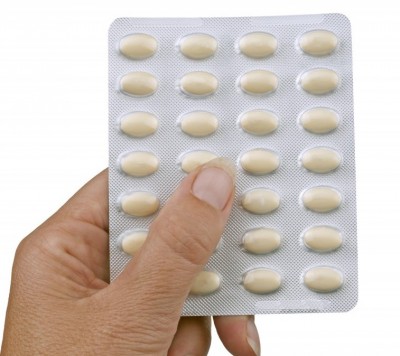During my residency training, as a budding gynecologist, I remember trying to convince all my menopausal women to take hormone replacement therapy (HRT). At the time, the medical community believed that, in addition to relieving hot flushes, estrogen therapy would preserve memory, prevent heart disease, preserve bone density and prevent colon cancer. Premarin was by far the most commonly-prescribed estrogen. The only acknowledged down-side was an increased risk of uterine cancer, but we gave Provera (a synthetic medication with progesterone-like effects on the uterus) to answer that threat. There was even a handy combination pill “Prempro” which had Premarin and Provera together in an appropriate ratio for uterine protection. This was EASY!
Then came the Women’s Health Initiative (WHI). In 2002 this prospective study, including over 160,000 women, was discontinued early due to an increased risk of breast cancer in hormone users.(1) It gets worse. As if breast cancer wasn’t enough, HRT was not protective against heart disease, rather it possibly INCREASED the risk for heart disease! This data was released by the New England Journal of Medicine(2) and the local evening news. Women across the country stopped their hormones and flocked to their gynecologists asking for help with hot flushes, night sweats and insomnia. “Yes, but those symptoms won’t kill you, whereas breast cancer or heart disease might” I would tell my patients.
The College of Obstetricians and Gynecologists had their own answer: Counsel your patients on the risks and benefits of hormone replacement therapy and let them decide. Oh, and use the lowest effective dose for the shortest amount of time.(3)
Not so fast! A closer look at the Women’s Health Initiative…
One issue many experts have with the WHI was the type of hormones given to the women in the study. It was either Prempro (for women with an intact uterus) or Premarin (for women who without a uterus–having previously undergone a hysterectomy). Is it fair to bash all hormone preparations because of this study?
What exactly ARE Premarin and Provera?
Premarin is conjugated equine (horse) estrogens–obtained from extracting and sterilizing a PREgnant MARe’s urINe. Get it? PRE-MAR-IN? Provera is a progestin–a compound with progesterone-like action on the uterus, but possibly other effects elsewhere in the body.
Who cares? Your hormone receptors and enzymes might care! Hormones act on receptors in a very intimate fashion, like a lock and key. The molecular 3-dimensional structure is very important. If a hormone has a slightly different shape, say because it is an equine estrogen or a progestin, it may trigger some of the same reactions as the body’s natural estrogens and progesterone, but it may also trigger unwanted reactions.
Likewise, when it’s time to dispose of the used-up hormones, enzymes break the hormones down for safe disposal. Enzymes attach to the hormones in a similar intimate fashion as the lock-and-key I described above. If the enzyme doesn’t attach easily, because the molecular shape is unusual, then the hormones cannot be metabolized as easily.
Is there a better option?
How about this–if it is available in the God-given form use that one? The term “bio-identical hormones” means that the hormone has the identical 3-dimensional molecular structure as the hormones that the ovaries make. It doesn’t mean “natural”, as in comes from nature. I don’t really care if the hormone was made in a lab or extracted from a plant; I care that the molecular 3-dimensional structure is the same as the hormone my ovaries make. Even if there were no other data available, it would just make sense to use hormones that have the same structure to your self-made hormones.
Ah, but there IS other data. Numerous studies support the safety of bio-identical hormones.
Multiple studies have shown that transdermal estradiol (which is bio-identical) has a lower incidence of heart attack and stroke compared to oral estrogen (not bio-identical).(4-6) Regarding breast cancer risk, studies conclude that breast cancer rates are higher in women using progestins than in women using bio-identical progesterone or no progesterone at all. (7,8) Looking at possible benefits of HRT, data shows that women on transdermal estradiol (bio-identical) had more improvement in belly-fat accumulation and less metabolic syndrome (a diabetes risk factor) than those on oral estrogen.(9)
It bothers me that many of the studies illustrating the safety of bio-identical hormones were performed almost 10 years ago, yet many gynecologists are unaware, still freely prescribing Prempro as a starting medication for HRT. What bothers me even MORE is that the American College of Obstetricians and Gynecologists, (ACOG) still won’t acknowledge the superiority of bio-identical hormones for better results and patient safety. The busy gynecologist that only has time to read the synopsis recommendations from his/her governing body, ACOG, on these topics still thinks that all hormones have the same risks and is likely unaware of the large accumulation of data supporting the safety and superiority of bio-identical hormones. Meanwhile, his/her patients live with the consequences.
References
1. JAMA. 2002;288(3):321-333. doi:10.1001/jama.288.3.3
2. N Engl J Med 2003; 349:523-534
3. ACOG Practice Bulletin No 141 January 2014
4. BMJ 2010 Jun 3:340
5. Circulation 2007;115:840–5
7. Breast Cancer Res Treat. 2008 Jan;107(1):103-11. Epub 2007 Feb 27
8. Cancer. 2003 Mar 15;97(6):1387-92
9. Maturitas. 2008 May 20;60(1):10-8. doi: 10.1016/j.maturitas.2008.02.008. Epub 2008 Apr 14






